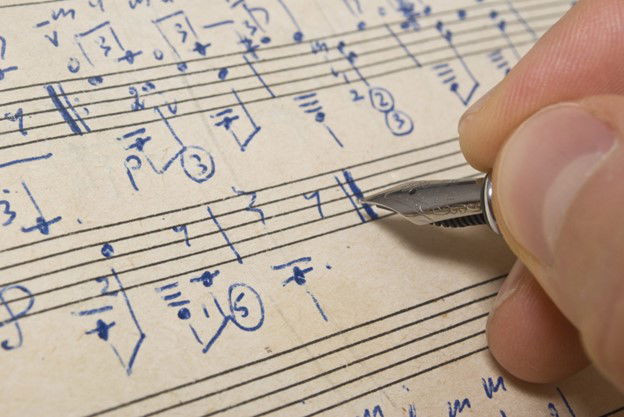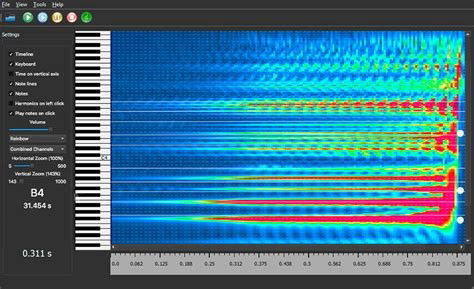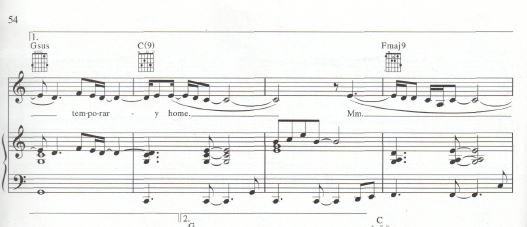Should I Use Transcription Software?

Personal Story – When I was in college, we had an arrangement project that called for us to do a more unique treatment of a Christmas carol. I forget what I did, but another guy in class did an arrangement of Silent Night. However, he used a computer. These days, that doesn’t seem like any big deal, but this was before personal computers of ANY kind were in existence. He had to use the computer in the math lab, and I believe he had to alter, or even write, his own program.
We were all impressed with him for being able to use the computer to write music. How cool! What we weren’t impressed with was the computer’s work! The piece was horrible. You could almost recognize the melody, and the harmonies had no art or beauty to them. It sounded very mechanical at best.
When I first heard about music transcription software. I was very wary of such a program. I also felt like it was going to be stiff competition. So, let me share a bit about each point.
In this article we’ll look at what Transcription Software can and cannot do. Even if AI is used, music is such a nuanced art that it takes a real human to do real music, especially a transcription.
Ability to Accurately Transcribe:
- Limited Number of Voices – The latest software for music transcription require that you play or sing only one part at a time. Some offered only a limited number of instruments for which it could write.
- Need for sophisticated software – Some transcription programs are somewhat complicated as well as requiring the operator to have a fairly high amount of knowledge of music theory. It seems that someone who wanted to use transcription software did so because they didn’t have such musical knowledge. Below is a sample of one of the software screens online.
- Many transcription software apps available are great for a single line from a pop song, but fail to be able to transcribe a piece with multiple instruments such as a jazz band or orchestra.

Ability to be Easily Read by Humans
There are certain musical courtesies that are used for transcribing and/or arranging, especially for vocal music. The music should be easy to read and interpret, no matter how difficult it is. In fact, the harder the music is, the easier it should be to read. Music is mathematical. If I gave you the following math problem, how easy is it to do?

Now, if I write it this way (below), how easy is it?

The two equations arrive at the same answer, but one is easier to do.
It’s the same in music. If I wrote the following phrase this way, how easy would it be to sight read it? Notice that the third beat of the first measure is not clear, and the lack of beams between some of the notes makes them not very easy to read, especially in a sight read.

Below is a much better way to write it so that it’s easier to read. Notice that the first and third beats of the measure are easily to see, so that the reader can play the syncopation in proper divisions.

There are at least two reasons that music is written with a time signature. The most important is to designate how many beats are in a measure. Another one is to show where the downbeat(s) is(are). If there were no downbeats, things like syncopation would be impossible. The best way to communicate music involves using the most apparent rendering.
Another Personal Story – One time, I was invited to sit in on a brass quartet’s rehearsal, playing trumpet. It seems that their second trumpet was absent and the part was necessary so that the others could tell where they were. It wasn’t an extremely difficult piece, but it had quite a few challenges. When rehearsal was over, the other three told me how impressed they were at my sight-reading ability. Later, as I had time to think about it, I realized that, although I had had a lot of experience in sight-reading, the main reason that I had done so well was the layout of the music. The music was by Mozart, and the man knew how to write music in the simplest form, with a few exceptions.
The point, as it relates to music transcription software, is that the computer uses a purely mathematical algorithm, which often is not very human-friendly. Because of that, the computer transcribed music lacks those musical courtesies that I mentioned before.
Accuracy
Another off-shoot of this mechanical transcription is that the music is written as a performer would do it, instead of a “straight” version as a composer would write it.
If a song is written down in standard music form before it is performed, it has a basic melody, chords, perhaps a specific piano part or vocal harmonies. When it’s performed, either for a live audience or in the recording studio, most often the lead singer will improvise, adding rhythmic and melodic variations based on “feeling” the music rather than any authentic music theory.
If this improvised version of the song, notably the melody, is transcribed using transcription software it tries to duplicate all of the pop nuances that the singer used, instead of creating a “straight” version that someone else could use.
Below are a few measures from the transcription of a pop tune. It appears that this is a transcription from the recording since the complexity would be somewhat difficult for a singer reading this music to recreate. The syncopation is unclear. The repeated D in the fourth measure would be unsingable since the lyric that goes with it a humming sound. It is very probable that such an addition wouldn’t even be in the original, straight sheet music.

Conclusions:
- Music Transcription Software may be useful for helping students learn how to transcribe music since it operates best transcribing one or two lines at a time.
- It may also be helpful in helping someone get started on a transcription process, but the transcriber must be able to understand what he or she is seeing and be able to transform it into a straight version of the song. It may also help someone see general trends in multi-instrumental pieces so that he or she can finish the transcription.
- Music Transcription is best done by humans. Although composers like J. S. Bach are said to have had a mathematical brain to be able to compose what they did, music is still an art form, and relies on many intuitive senses to be composed and performed. Often, mathematics and algorithms are not enough to properly capture the essence of music and transfer it to paper.
Salt Cellar Creations understands the need for humans to transcribe music. Click HERE to see more about the Transcription Services we offer.
SCC can also compose an original piece for you or do a custom arrangement for you. There are two ways that this can be done; one is much more affordable than the other. And SCC is always looking for ideas of pieces to arrange or suggestions for original pieces.
We have sold music not only in the US but in Canada, the United Kingdom, France, Australia, New Zealand and Austria. Please visit the WEBSITE or CONTACT US to let us know what we can do for you!